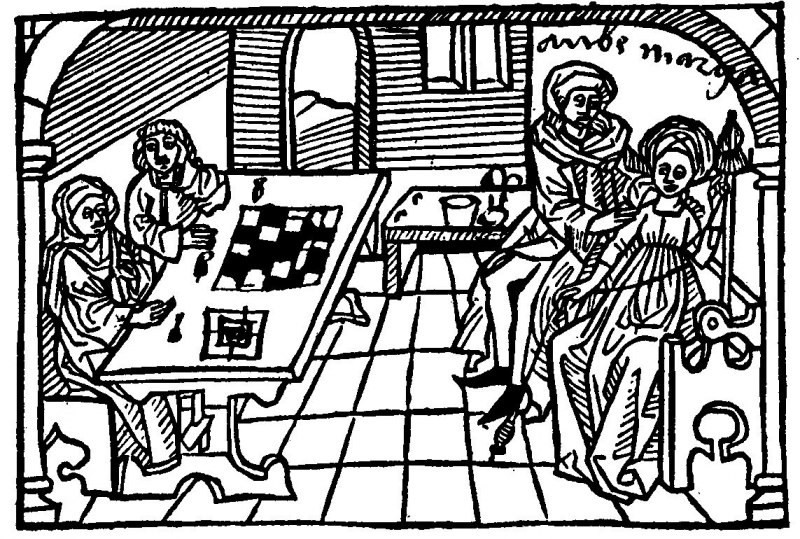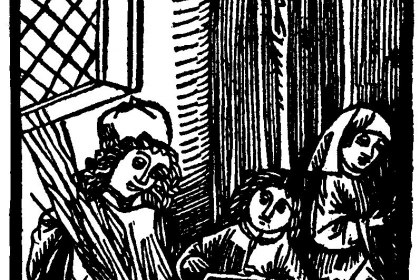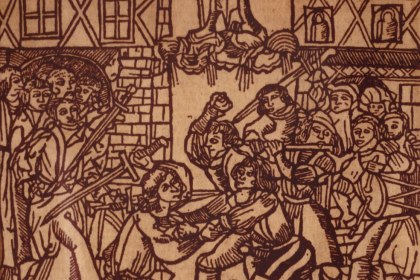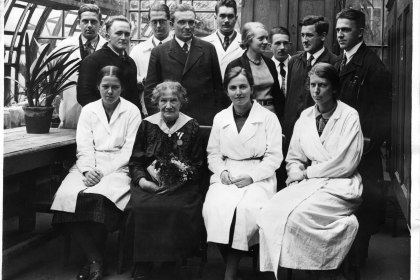“Fossen” and “Partekenfresser”
If one is to believe contemporary complaints about the undisciplined behavior of students in the 15th and 16th centuries, their preferred activities were making noise, nightly loitering, binge drinking, violent confrontations with citizens, visiting “women’s houses” (the contemporary name for brothels), playing dice and chess, and other prohibited pastimes. All of this in provocative, fashionable clothing that ran counter to the regulations. The sources also include the swear words that were used to describe these undesirable people: “Fosse” (good-for-nothing, rascal, vagrant), or, more specifically, “Partekenfresser” (“Parteken eaters”; “Parteke” was the name for the piece of bread that was given to poor students as charity).
These stereotypes were not only prevalent in Vienna, but in the whole European university world. They informed a distorted picture that did not necessarily correspond to reality, but did actually have a background in reality.
In the University of Vienna’s records, kept by its officials (rectors, deans), there is mention of student “excesses”: brawls, riots, violations of dress regulations, carrying of weapons and similar offences. Already at the establishment of the university in 1365 one had thought of the possibility of violent conflicts with citizens due to members of a privileged legal community – also including the students – living together. Experiences from other university locations certainly played a role in this. Punishments for murder and assault of university members depending on the severity of the case were determined in the deed of foundation. It was also regulated who the judge would be: the university’s rector. Magisters or scholars who seduced a woman were to lose all university privileges. In consequence, this punishment – expulsion from the university – was a measure carried out often, not only related to interaction with women. With this punishment, the people concerned, who often had come to study from abroad, lost the protection of the university and were at the mercy of the city’s authority, which often was not well-disposed to foreigners.
A secluded men’s society, which the university was for centuries, almost inevitably brought conflict into the city, which could for example ignite in contact with the other gender. It probably was no coincidence that the largest Viennese student riot, the “Latin War” of 1513, started in front of a “women’s house”, a brothel. Their opponents were winemakers’ servants, with whom there had already been violent confrontations the century before. Such incidents often ended with people dead or badly wounded. Other places where violent conflicts were carried out were taverns, baths and nighttime streets.
Violent confrontations also occurred with other city residents, such as artisans. In 1454 there was a confrontation with butcher journeymen, who fought the students with bows, swords and other weapons. On another occasion castle mercenaries and followers of the royal captain in Austria, Wolfgang von Wallsee, were the opponents. In 1460 members of the papal legate cardinal Bessarion’s retinue were attacked by students when he was visiting Vienna. It is no wonder that such cases also caused political and diplomatic turbulences which embarrassed the university’s officials, since they were the ones responsible for the students’ supervision and jurisdiction.
In faculty statutes and bursae (student housing) regulations, clothing, lifestyle and daily life of the students were painstakingly governed. The relatively high student numbers at the University of Vienna in the 15th and early 16th century led to many students living in private accommodations, which were not regulated by the university. Constantly, the university was faced with criticism that they were not able to enforce their own rules. Indeed, the complaints about nighttime vagrancy, visits of taverns, baths and “women’s houses” are so prevalent in the university sources, that it seems the public and uncontrolled presence of students in the city was a common occurrence.
The students concerned most often were scholars of the Faculty of Arts, who made up the majority of university members. They usually were slightly younger than today’s students, often between the ages of 14 and 16. Thus, the repeated confrontations with other, often also young, city residents can also be seen in the context of a late medieval and early Modern youth culture, in which violent conflicts between rivaling groups of adolescents was not uncommon.




